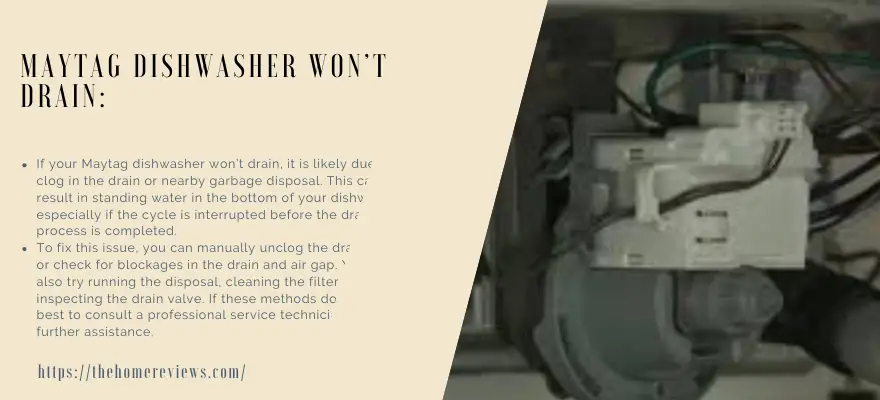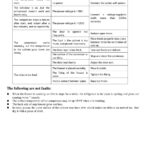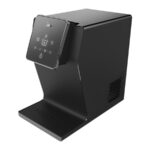
If your Maytag dishwasher won’t drain, it is likely due to a clog in the drain or nearby garbage disposal. This can result in standing water in the bottom of your dishwasher, especially if the cycle is interrupted before the draining process is completed.
To fix this issue, you can manually unclog the drain hose or check for blockages in the drain and air gap. You can also try running the disposal, cleaning the filter, and inspecting the drain valve. If these methods don’t work, it’s best to consult a professional service technician for further assistance.
Why is your Maytag dishwasher not draining?
If your Maytag dishwasher won’t drain, you may need to check for clogs or obstructions in the drain hose, drain valve, or nearby garbage disposal. Ensure that the cycle isn’t interrupted before the draining process is completed to avoid standing water in the bottom of the dishwasher.
Discover how to manually drain water from a Maytag washer and try techniques like running the disposal, cleaning, or changing the filter if draining remains an issue.
If you’ve noticed that your Maytag dishwasher is not draining properly, it’s important to understand the potential causes of this issue before proceeding with troubleshooting. Here, we will explore the most common reasons why your Maytag dishwasher may not be draining and how to diagnose the problem effectively.
Potential Causes of a Dishwasher Not Draining Properly:
- Clogged drain filter: A clogged drain filter can prevent proper drainage in your dishwasher. Food particles, debris, or mineral buildup can accumulate over time and block the drain filter, hindering water flow.
- Blocked drain hose: A blocked drain hose can also lead to drainage issues. Inspect the drain hose for any obstructions, such as food debris or kinks, which can prevent water from flowing out of the dishwasher.
- Faulty drain pump: A malfunctioning drain pump can cause drainage problems. The drain pump is responsible for removing water from the dishwasher tub and sending it down the drain. If the pump is not functioning correctly, water may not be adequately drained.
- Garbage disposal clog: If your Maytag dishwasher is connected to a garbage disposal unit, a clog in the disposal can affect drainage. Check the garbage disposal for any obstructions that may be preventing proper water flow.
- Defective drain valve: The drain valve controls the flow of water out of the dishwasher. If the valve is faulty or stuck, it can impede proper draining. Inspect the drain valve for any damage or blockages.
Importance of Diagnosing the Issue Before Proceeding with Troubleshooting:
Before attempting any troubleshooting steps, it is crucial to diagnose the exact cause of your Maytag dishwasher not draining. Diagnosing the issue correctly will help you identify the specific component or area that needs attention, saving you time and effort.
By understanding the potential causes mentioned above, you can perform the necessary checks to pinpoint the root of the problem. This way, you can focus on resolving the underlying issue rather than attempting random fixes that may not solve the problem effectively.
Once you have identified the cause, you can proceed with the appropriate troubleshooting steps, whether it’s cleaning the drain filter, removing blockages, repairing or replacing faulty components, or seeking professional assistance if needed.
Remember, diagnosing the issue accurately is the key to resolving the draining problem in your Maytag dishwasher efficiently.
Step-By-Step Guide To Finding And Clearing Blockages
Discover step-by-step instructions for checking and clearing blockages in your Maytag dishwasher that won’t drain. From removing racks to inspecting the drain valve and hose, learn how to fix the issue and get your dishwasher back in working condition.
Examining the Dishwasher Filter for Debris and Food Particles:
- Remove the bottom rack of your Maytag dishwasher to access the filter.
- Inspect the filter for any debris, such as food particles or residue.
- Clean the filter by rinsing it under running water to remove any buildup.
- Ensure that the filter is properly secured back in place before running the dishwasher again.
Clearing Clogged Drain Valves and Checking for Electrical Issues:
- Locate the drain valve by finding the valve bracket in your dishwasher.
- If the valve bracket is stuck, it may indicate electrical components that need to be replaced.
- Check for any clogs or obstructions in the drain valve. Use a small brush or toothpick to clear out any debris.
- Test the drain valve by manually moving it to ensure it is functioning properly.
- If you suspect any electrical issues, it is recommended to seek professional assistance.
Inspecting the dishwasher drain hose for obstructions:
- Start by disconnecting the dishwasher from the power source to ensure safety.
- Locate the drain hose, which is typically located at the bottom of the dishwasher.
- Check the drain hose for any clogs or obstructions.
- Use a flashlight and a wire hanger to gently remove any debris from the hose.
- Reconnect the dishwasher to the power source and run a test cycle to check if the draining issue is resolved.
Remember, regularly cleaning your dishwasher and performing routine maintenance can help prevent future drainage problems.
Resolving Common Issues Causing Drainage Problems
Learn how to troubleshoot common issues causing drainage problems in your Maytag dishwasher. Discover easy solutions to fix clogs in the drain hose or nearby garbage disposal, ensuring proper drainage after each wash cycle. Get your dishwasher back to working efficiently with these helpful tips.
Standing water in your Maytag dishwasher can be quite frustrating, especially when you’re expecting clean and dry dishes. However, before calling the repair technician, there are a few troubleshooting solutions you can try to resolve the common drainage problems. Let’s take a look at some effective troubleshooting methods for unclogging the dishwasher drain, removing stuck objects, and using a plumber’s snake to clear stubborn blockages.
Unclogging the dishwasher drain using vinegar and baking soda
- Pour one cup of distilled white vinegar into a dishwasher-safe bowl.
- Place the bowl on the top rack of the dishwasher.
- Sprinkle one cup of baking soda around the bottom of the dishwasher.
- Run a hot water cycle on the dishwasher.
The combination of vinegar and baking soda will create a foaming reaction that helps dislodge any debris or buildup in the drain. Repeat this process if necessary.
Tips for Removing Stuck Objects in the Drain Pump or Impeller:
- Turn off the power to the dishwasher and unplug it from the outlet.
- Locate the drain pump access panel, usually located on the front or bottom of the dishwasher.
- Remove the screws or clips securing the panel and set it aside.
- Inspect the drain pump and impeller for any visible objects or debris.
- Use a pair of pliers or tweezers to carefully remove any stuck objects.
- Once the drain pump and impeller are clear, replace the access panel and secure it with screws or clips.
Using a Plumber’s Snake to Clear Stubborn Blockages:
- Turn off the power and unplug the dishwasher.
- Locate the dishwasher drain hose, usually connected to the sink’s plumbing.
- Disconnect the drain hose from the sink or garbage disposal.
- Insert the plumber’s snake into the drain hose and gently feed it in.
- Rotate the snake clockwise while gently pushing it further into the hose.
- Continue rotating and pushing until you feel resistance or encounter a blockage.
- Once you’ve reached the blockage, rotate the snake counterclockwise to break it up or pull it out.
- After removing the blockage, reconnect the drain hose and secure it tightly.
Using a plumber’s snake can help dislodge and remove stubborn blockages that may be causing your dishwasher to not drain properly.
Remember, if these troubleshooting solutions do not resolve the drainage problem with your Maytag dishwasher, it may be time to call a professional technician for further assistance.
Tips To Avoid Future Drainage Problems
Learn how to prevent future drainage problems with your Maytag dishwasher. Discover tips and tricks to avoid clogs and ensure efficient draining, saving you time and hassle in the long run.
Maytag Dishwasher Won’t Drain: Preventive Maintenance Tips to Avoid Future Drainage Problems
Is your Maytag dishwasher not draining properly? Dealing with a dishwasher that won’t drain can be frustrating and inconvenient. But fear not, there are preventive measures you can take to avoid future drainage problems. By following some simple maintenance steps and adopting good practices, you can keep your dishwasher running smoothly.
Here are a few tips to help you prevent drainage issues in the future:
Regularly cleaning the dishwasher filter and drain:
- Remove and clean the dishwasher filter. A dirty filter can cause drain clogs. Regularly check the filter and clean it by rinsing it under running water or soaking it in warm, soapy water. Ensure that it is free from food particles and debris before putting it back.
- Clear any debris from the drain. Sometimes, debris can accumulate in the dishwasher’s drain, leading to clogs. Use a paper towel or a small brush to remove any visible debris from the drain area.
Properly Loading Dishes to Prevent Blockages and Backups:
- Scrape off excess food. Before loading your dishes, scrape off any excess food to prevent it from clogging the drain. Large food particles can cause blockages, so it’s crucial to remove them beforehand.
- Avoid overcrowding: Overloading the dishwasher can prevent water from properly reaching all the dishes, leading to drainage problems. Make sure to arrange the dishes in a way that allows water to flow freely and reach all corners of the dishwasher.
Using Dishwasher-Safe Disposal Covers to Prevent Food Particles from Clogging the Drain
- Install dishwasher-safe disposal covers: These covers fit over your sink’s disposal opening and help prevent food particles from entering the dishwasher drain. They can be easily removed and cleaned, ensuring that your dishwasher stays free from clogs caused by food debris.
By following these preventive maintenance tips, you can minimize the risk of future drainage problems with your Maytag dishwasher. Regularly cleaning the dishwasher filter and drain, properly loading dishes, and using dishwasher-safe disposal covers will help keep your dishwasher running smoothly and efficiently.
Remember, prevention is always better than dealing with a clogged dishwasher!
When To Seek Professional Help: Signs That Indicate A Need For Professional Assistance
If your Maytag dishwasher won’t drain, it may be time to seek professional help. Signs that indicate a need for professional assistance include standing water in the dishwasher after a complete wash cycle and clogs in the drain or nearby garbage disposal.
Is your Maytag dishwasher refusing to drain? While some drainage issues can be resolved with simple troubleshooting steps, there are times when it’s best to seek professional help. Here are a few signs that indicate you need the expertise of a service technician:
- Persistent clogs: If you’ve tried clearing the drain and removing any visible debris, but the dishwasher still won’t drain, it could be a sign of a more complex clog deep within the system.
- Strange noises: Unusual sounds during the dishwasher’s drainage process, such as gurgling or grinding, may indicate a blockage or a faulty motor that requires professional attention.
- Leakage: When your Maytag dishwasher is not draining properly, it may result in water pooling at the bottom of the appliance or even leaking onto your kitchen floor. This could be a sign of a more significant issue that needs professional repair.
- Electrical problems: If you notice any electrical malfunctions, such as flickering lights or an unresponsive control panel, while attempting to diagnose the drainage problem, it’s best to leave it to the experts to avoid any potential risks.
- Foul odors: Persistent foul smells emanating from your dishwasher, despite regular cleanings, can be a sign of a drain blockage or a malfunctioning component that requires professional repair.
When you encounter any of these signs, it’s time to reach out to a reputable service technician for expert diagnosis and solutions. They have the technical knowledge and experience to identify complex issues that may be causing your Maytag dishwasher to not drain properly.
Additionally, seeking professional help ensures that you don’t inadvertently cause further damage to the appliance while trying to fix it yourself.
Remember, contacting a professional service technician is the best course of action when dealing with complex dishwasher issues. They can diagnose the problem accurately and provide appropriate solutions, ensuring your dishwasher is back to working seamlessly in no time. Don’t hesitate to seek professional assistance to ensure the longevity and efficiency of your Maytag dishwasher.
Frequently Asked Questions
Why Is There Water In The Bottom Of My Maytag Dishwasher?
If there is water at the bottom of your Maytag dishwasher, it may be due to a clog in the drain or nearby garbage disposal.
How do I force my Maytag washer to drain?
To force your Maytag washer to drain, follow these steps: 1. Move the washer away from the wall and disconnect the power and water connections. 2. Remove any remaining water from the washer drum. 3. Disconnect the drain hose from the wall or sink drain and empty the water into a bucket.
4. Check for any clogs or obstructions in the drain hose or nearby garbage disposal. 5. If necessary, clear the blockage to allow for proper draining. 6. Reconnect the drain hose and ensure it is securely fastened. 7. Turn on the power and water connections and run a test cycle to check if the washer is draining properly.
Remember, if you are unsure or uncomfortable performing these steps, it’s best to call a professional service technician for assistance.
Why is my dishwasher not going into the drain cycle?
A dishwasher may not go into the drain cycle due to full garbage disposal, a kink in the drain hose, or a clog in the hose, drain, or air gap.
How Can I Force My Dishwasher to Drain?
To force your dishwasher to drain, follow these easy steps: 1. Check for any blockages in the drain, such as food particles or debris. 2. Inspect the drain hose for any kinks or clogs and clear them if found. 3. Ensure the dishwasher is loaded correctly, avoiding overcrowding and blocking the drainage system.
4. Clean or replace the dishwasher filter to ensure proper drainage. 5. Listen to the machine while it’s running for any unusual noises that may indicate a drainage issue. 6. Run the garbage disposal to ensure it’s not blocking the drain water from the dishwasher.
7. Consider using a mixture of vinegar and baking soda to clean the dishwasher and promote better drainage. 8. If these techniques don’t work, it may be advisable to contact a professional technician for assistance.
Why Is There Water In The Bottom Of My Maytag Dishwasher?
Occasionally, a dishwasher may have standing water remaining if the cycle has been interrupted before the draining process has been completed. Excessive standing water that fills the bottom of your dishwasher after a complete wash cycle is likely due to a clog in the drain or nearby garbage disposal.
Conclusion
After trying to troubleshoot why your Maytag dishwasher won’t drain, you may be feeling frustrated and unsure of what to do next. However, there are several steps you can take to resolve this issue and get your dishwasher back up and running smoothly.
First, check the filters and drain valve for any clogs or obstructions. If you find any, remove them and try running the dishwasher again. If that doesn’t solve the problem, inspect the drain hose for any kinks or blockages. Straightening out the hose or clearing any debris should help with drainage.
Finally, if none of these steps work, it may be best to call a service technician for assistance. They have the expertise to diagnose and fix more complex issues with your dishwasher. By following these steps, you can tackle the problem of a Maytag dishwasher that won’t drain and get your dishes clean and dry once again.




